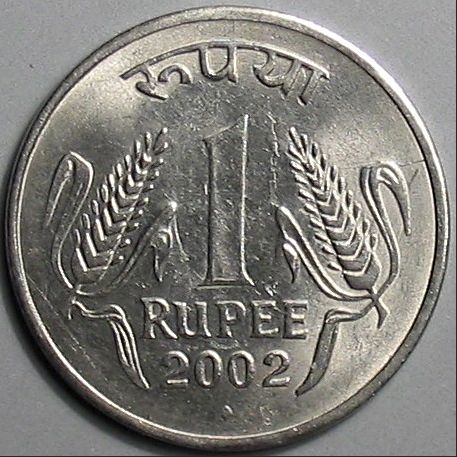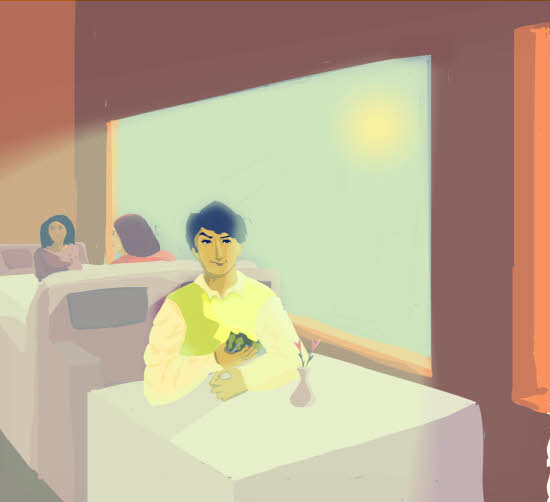by Meera Ramanathan
[box]The one rupee coin is special for many an Indian kid. Meera Ramanathan shares her experiences with the coin. Read on.[/box]
Being the little one in the family, my father always handed me the one rupee coin to be placed along with the wad of notes for religious poojas or as part of gifts given to relatives. I was not quizzical about the coin itself but enjoyed the adulation of being an integral part of the ceremony.. During house warming functions, naming ceremonies or weddings we collected one rupee coins in bags. It used to be a very important part of the ceremony like the sweets and the fire. A must-have. When the metal coin was placed along with the notes, I rarely questioned its existence or the need to gift in odd numbers.
The one rupee coin holds a lot of special memories. When my grandfather lived with us, I would be his errand girl. Once a week I would be summoned and the coin would be handed over to me. I would run swiftly to the potti kadai (corner shop) and get four Vicks vapourub golis. Those were days when a lot of things could be got in multiples of four for just a rupee. As I handed the golis over to my grandfather, he would pat my cheeks and give me one of them. I would gleefully accept this and stash it in my cupboard. Needless to say these golis served as a pawn for many challenges that ensued between my sister and me.
When we made our customary visits to the temple on birthdays or special occasions, my mother would give my sister and me a coin each. We would then have to choose a deity and deposit it in the respective undiyal (collection box). My sister always made way to the Pillayar (Lord Ganesha). She knew her Gods – every time something new started – a house construction, a new car or even exams, a coconut was broken for the Pillayar. He is the elephant God who promises that the chosen path will be free of obstacles. As a child, each time I saw my sister slide the coin in the slit, I would be torn between Perumal (Lord Vishnu) and Hanuman, not because I had some wish that he had to grant, but because a deposit meant an extra coupon for the neivethanam(offering). Before you judge me, get your hands on the temple’s tamarind rice. The smell would not only enchant you, the taste would leave you in a trance for days. While the tamarind rice would lure me, a coin for the Hanumar meant a vadai from the garland that was made for him. As I would squirm and run from deity to deity with my one rupee coin, a lesson was being learnt. No matter how much money you have, make your choices wisely and worthy. Most days the tamarind rice won.
Being born Indian, prostrating was next to squatting. Elders and functions always meant one thing. At the end of their visit or the ceremony you waited in line to prostrate. I never found this demeaning because the receiving end always bestowed upon us heartfelt blessings of long life or good education and stuffed money in our hands. Needless to say, my parents never wanted money to fascinate us; so the said gift was dutifully collected and what was left was anyone’s guess: the coin that made gifts odd. We could spend it at our own will but my father always enquired what we had done with it. Although he never commented or rebuked us, the very fact that an enquiry was to ensue made us spend it solely on food. I was so little and naïve that I hadn’t mastered the art of lying and shopping was confined to chocolates and mints.
Another reason to rejoice, particularly for women and children, when you are born in the South Indian household, is the Navrathiri pooja or the festival of dolls. Celebrated every year for nine days, it provides ample entertainment and delicious food. As you leave people’s homes, where you are invited to view their splendid and unique display of dolls, you see a display of benevolence. For children, they would tastefully gift a doll set or a makeup set and for the elder ladies, a piece of cloth to be sewed into a sari blouse. Cash always accompanied these gifts. My mother promptly collected the cash claiming that I would lose it. The gift and the coin were my companions on the way home.My childhood was strikingly marked with this one rupee coin. It was not until I made my way to a remote village in Rajasthan to pursue my graduation that I felt the wad of notes. When I started to take home my own pay check, I did not head to the mall. But in those days of new found freedom and growing bank balances, reason began to shadow the limelight of my childhood companion and I started questioning the presence of the coin. I mocked this business of giving someone cash in odd numbers (It was always hundred plus one and thousand plus one, never a hundred or a thousand). I called it superstition and even challenged my father that he could never explain it. My father answered that there are some things in life that you do without questioning and there are also some things for which you have your own explanations. His was that the one rupee coin was the masthead. Without it neither a hundred rupees nor a thousand was worthy of gifting. This coin had taught me a valuable moral. Being small does not make you insignificant; in fact it makes you more significant.
Now living half way across the globe I have one dollar and twenty dollar notes in abundance. When my parents visit or when I visit them in India, I make it a point to give them dollars. They always look at me quizzically and tell me it has no use. What would they do with foreign currency in India? But I tell them it could be of use when they visit me and they can spend it at their own will. My mother always insists that I give her the dollars in odd numbers. So even with dollars I add the one rupee. As I look back, in stuffing my childhood with just a rupee, my parents have taught me not only to be frugal but showed me the joy that comes with little things. And I still cling on to the one rupee coins.
Meera Ramanathan is a freelance writer trying desperately to pen the stories that haunt her mind. Armed with a Masters from BITS Pilani, she has spent five years designing SAP products and switched gears to creative writing. Dabbling in Tamil Cinema, fiction, food and travel writing, she even pens short stories in her native language Tamil.
[button link=” https://sparkthemagazine.com/wp-content/uploads/2011/09/Spark-Sep2011.pdf” color=”red” newwindow=”yes”] Click here to download the September 2011 issue as a PDF.[/button] [button link=”http://issuu.com/sparkeditor/docs/spark-sep2011?mode=embed&layout=http%3A%2F%2Fskin.issuu.com%2Fv%2Fcolor%2Flayout.xml&backgroundColor=000000&showFlipBtn=true” color=”green” newwindow=”yes”] Click here to flip and read the issue like a magazine.[/button]
[facebook]Share[/facebook] [retweet]Tweet[/retweet]










[…] https://sparkthemagazine.com/?p=2398 Share this:TwitterFacebookLike this:LikeBe the first to like this post. This entry was posted in Writer. Bookmark the permalink. ← Iran through two books […]